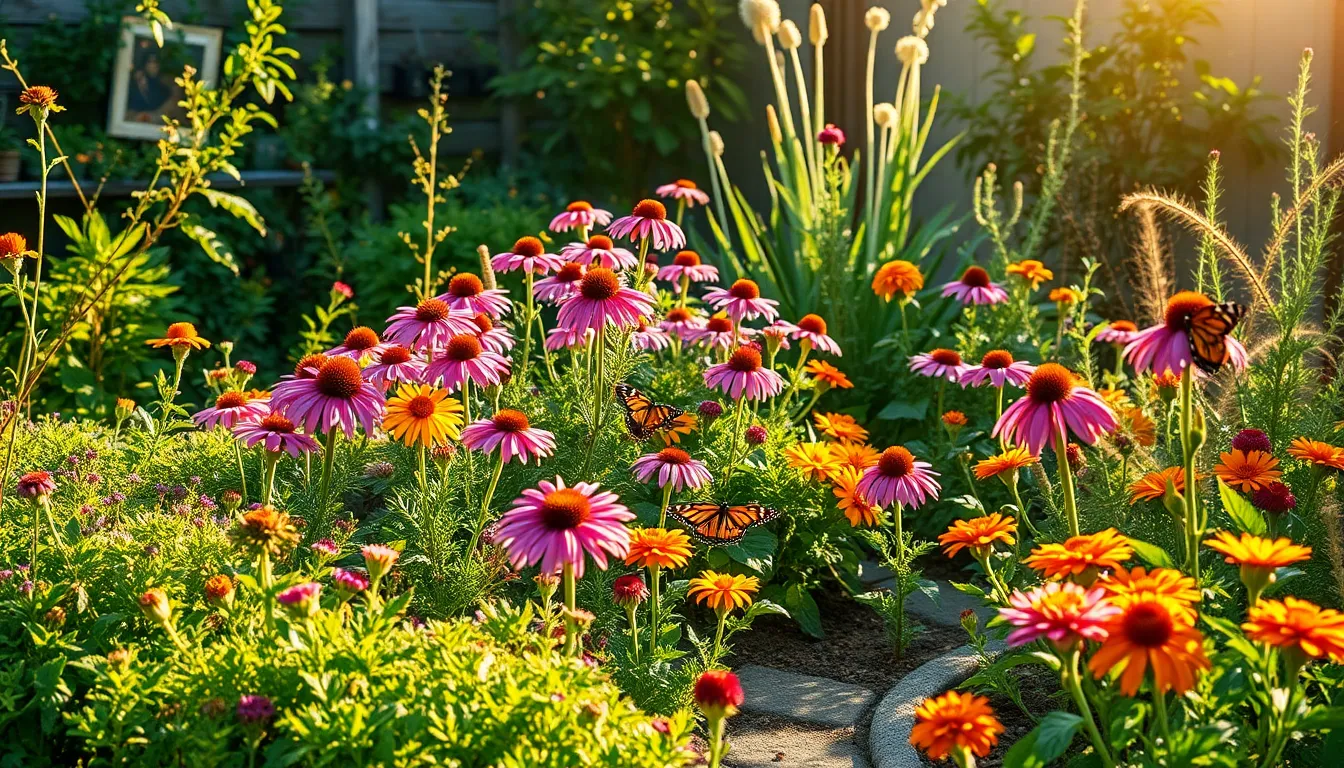Imagine stepping into your own backyard haven teeming with fluttering wings, vibrant colors, and the gentle hum of nature at its finest. Creating a butterfly garden isn’t just about cultivating beauty; it’s about fostering an ecosystem that supports these delicate creatures, inviting them to dance among your flowers and delight your senses. Whether you’re taking your first step into the world of gardening or you’re a seasoned horticulturist looking to expand your haven, a butterfly garden offers a unique and rewarding challenge that beckons to all.
For beginners, it’s an opportunity to learn about the symbiotic relationships between plants and pollinators, while experienced green thumbs can refine their skills by selecting specific plant species that cater to the needs of varying butterfly species. In this article, you’ll discover the essential elements to consider, from choosing the right plants that encourage butterflies to linger, to creating a habitat that supports their lifecycle from caterpillar to chrysalis. We will guide you through the process with practical tips and inspiring ideas, ensuring that your butterfly garden thrives and becomes a sanctuary for these enchanting visitors.
Embarking on the journey of creating a butterfly garden is more than just a gardening project; it’s a commitment to conservation and biodiversity. You’ll gain insights into the role these gardens play in supporting local ecosystems and encouraging biodiversity in your area. By the end of this article, you will be equipped with the knowledge and confidence to transform your garden into a vibrant refuge for butterflies, where you can witness the magic of nature’s transformation and contribute to the health of our planet.
Understanding Butterfly Garden Basics
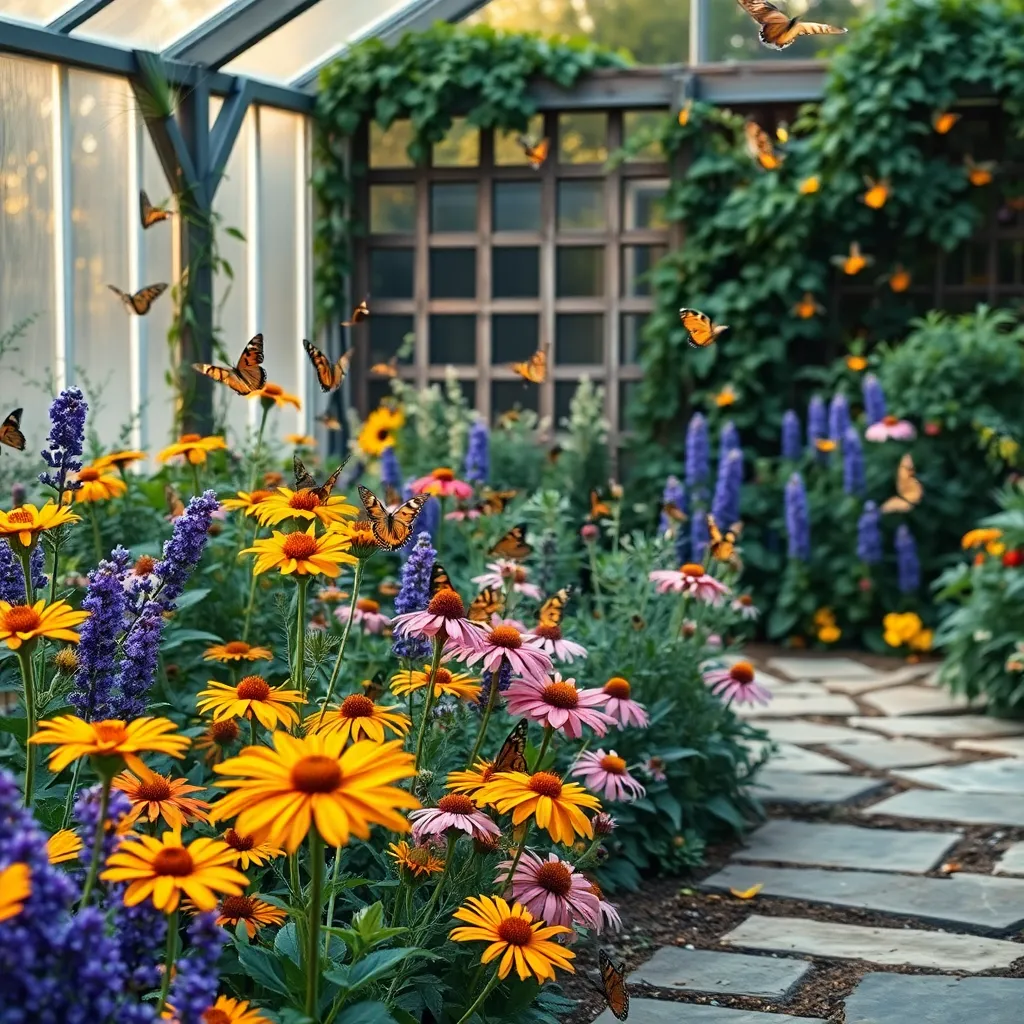
Creating a butterfly garden begins with selecting the right plants, as butterflies are particularly attracted to certain species. Opt for a mix of nectar-rich flowers like milkweed, coneflowers, and butterfly bush to provide a continuous source of food.
Consider the location of your garden carefully to ensure it receives at least six hours of sunlight daily, as butterflies are sun-loving creatures. Soil that is well-draining and slightly sandy is ideal for most butterfly-attracting plants, so you might need to amend your soil with sand or perlite.
Watering is crucial, especially during the establishment phase of your plants. Aim for a deep watering once a week, allowing the soil to dry slightly between sessions, which helps establish strong roots and encourages blooms.
For those with a bit more gardening experience, try creating small puddling areas with moist sand or mud for butterflies to drink and extract minerals. These can be as simple as a shallow dish with wet sand, placed in a sunny spot.
Butterfly gardens not only attract these colorful insects but also serve as a habitat for their entire lifecycle. Incorporate host plants such as parsley or dill, which caterpillars will feed on, ensuring butterflies can lay eggs and thrive in your garden.
Choosing Butterfly-Friendly Plants
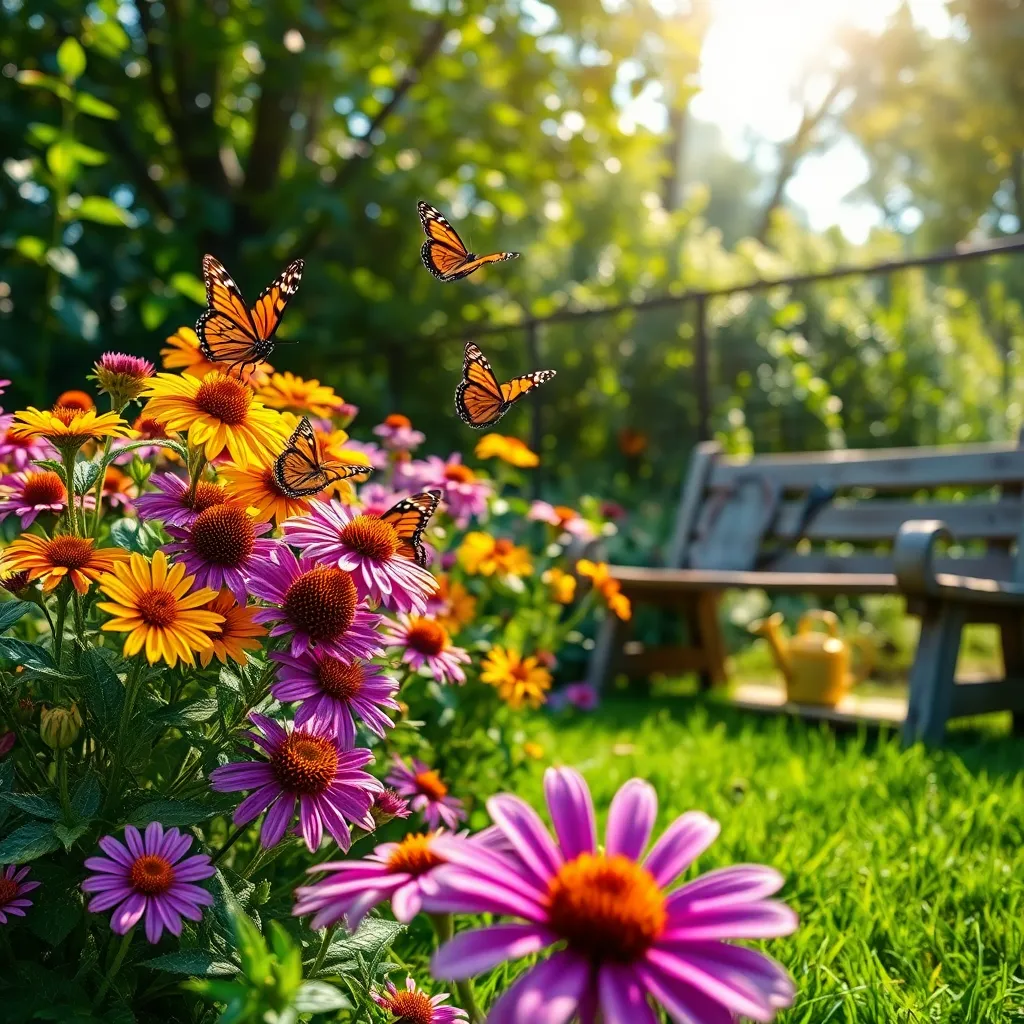
To create a vibrant butterfly garden, start by selecting nectar-rich plants that will attract these winged visitors. Consider planting a variety of flowers that bloom at different times, ensuring a continuous food source throughout the growing season.
Butterflies are particularly attracted to brightly colored flowers like zinnias, marigolds, and lantanas. These plants not only provide nectar but are also low-maintenance, thriving in well-drained soil and full sun.
For beginners, it’s important to focus on native plant species, which are typically well-suited to the local climate and soil conditions. Native plants also tend to attract more butterflies as they have co-evolved in the same ecosystem.
Advanced gardeners can enhance their butterfly garden by incorporating host plants for caterpillars, like milkweed and parsley, which support the entire lifecycle of butterflies. Ensure these plants are free from pesticides, as chemicals can harm both caterpillars and adult butterflies.
Regular watering is crucial, especially during dry spells, to keep the plants healthy and blooming. Aim to water deeply but infrequently, allowing the soil to dry out slightly between waterings, which encourages deep root growth.
Designing a Butterfly-Friendly Layout
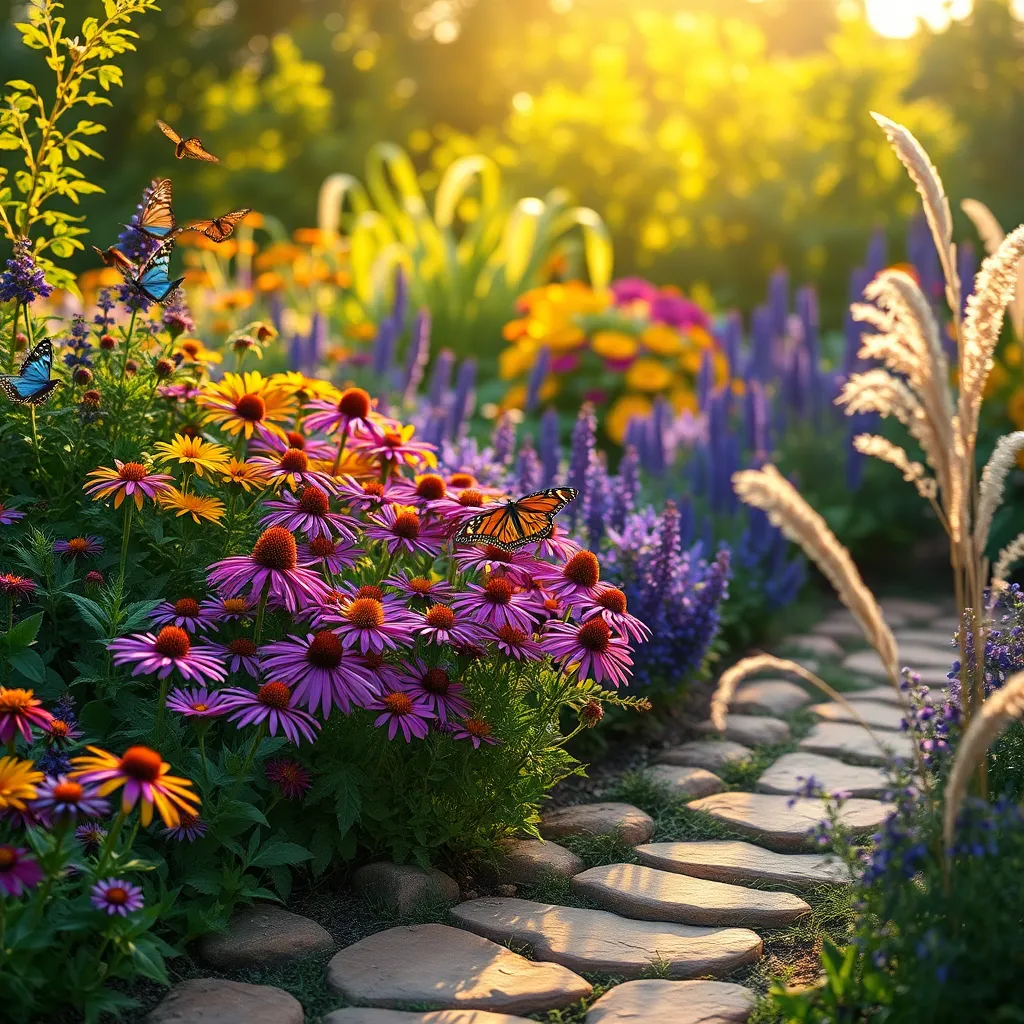
To design a butterfly-friendly garden layout, start by creating a mix of sunny and sheltered spots to cater to different butterfly needs. Butterflies are cold-blooded and require warm areas to bask, so placing flat stones or dark surfaces in sunny patches helps them absorb heat effectively.
Incorporate a variety of plants with different bloom times to ensure a continuous nectar supply throughout the seasons. This approach not only supports butterflies year-round but also adds visual interest to your garden as different plants take turns to shine.
Consider the height and spread of each plant to create layers in your garden, which can provide both feeding and resting areas for butterflies. Taller plants should be placed at the back or center of your garden beds, with shorter plants in front for a tiered effect that makes nectar easily accessible.
Water features can enhance your butterfly garden by providing essential hydration for these delicate creatures. A shallow dish filled with sand and water works well, as butterflies prefer to sip from moist surfaces rather than open water.
For those looking to add an advanced touch, try incorporating a small puddling area using a shallow container filled with water and a pinch of salt or sugar. This mimics natural mineral sources that butterflies seek out, offering an additional attraction to your garden.
Caring for Your Butterfly Garden
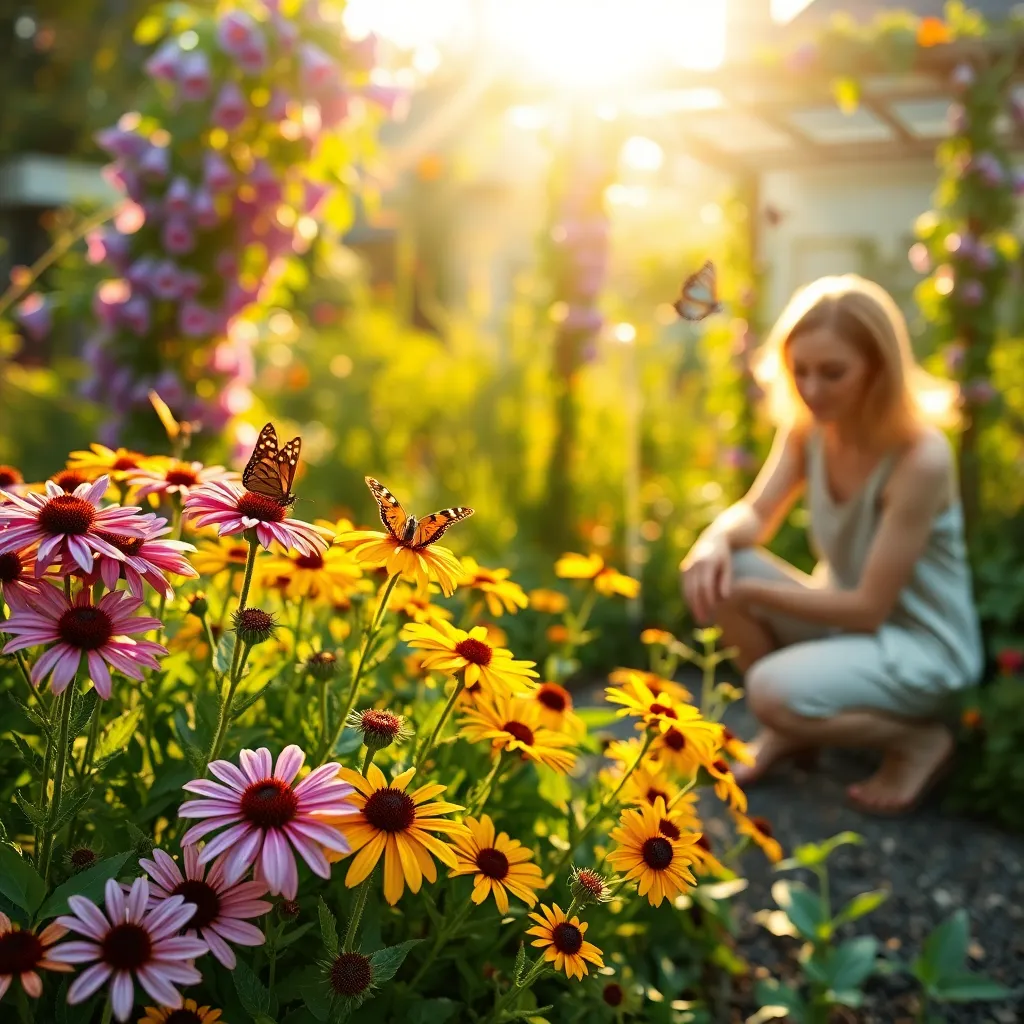
Caring for your butterfly garden involves regular maintenance that enhances plant health and attractiveness to butterflies. Start by ensuring your soil is rich in nutrients; a mix of compost and well-draining garden soil is ideal for most butterfly-attracting plants.
Watering your butterfly garden correctly is crucial for plant vitality. Most butterfly-friendly plants prefer consistent moisture but should not sit in waterlogged soil, so aim to water deeply once a week, allowing the soil to dry out slightly between waterings.
Incorporating a variety of native plants can significantly boost the number of butterflies visiting your garden. Native species are adapted to local conditions and often require less maintenance, making them a practical choice for both novice and experienced gardeners.
To ensure your plants thrive, consider the sunlight requirements of each species. Many butterfly plants, like coneflowers and milkweed, need full sun, which means they should receive at least six hours of direct sunlight per day.
Pruning is an essential aspect of maintaining a healthy garden. Regularly removing dead or diseased plant material not only enhances the visual appeal but can also prevent the spread of pests and diseases that may deter butterflies.
Lastly, avoid using pesticides in your butterfly garden. These chemicals can be harmful to butterflies and other beneficial insects; instead, encourage natural predators or use organic methods to manage pests.
Attracting and Observing Butterflies
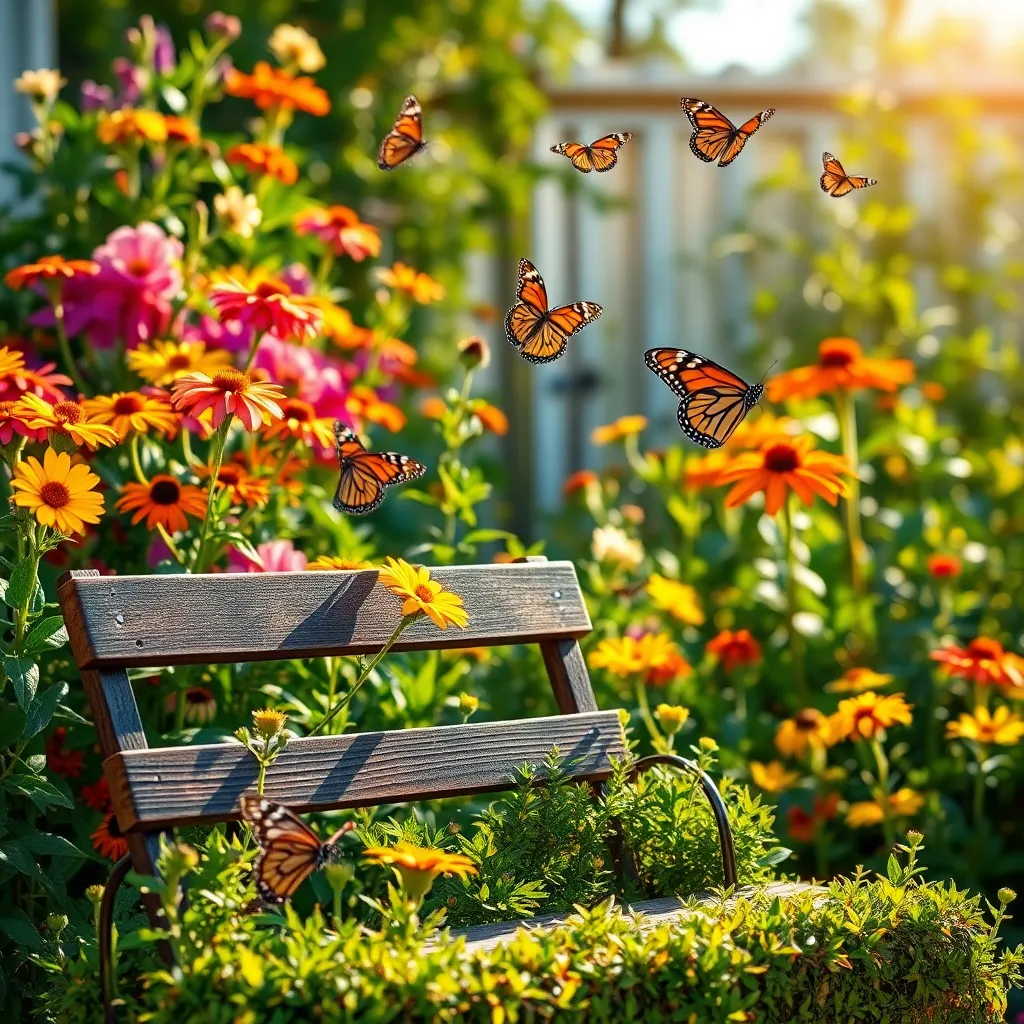
To attract butterflies, start by planting a variety of nectar-rich flowers, such as milkweed, coneflowers, and lantana, which are known to draw in these vibrant pollinators. Ensure these plants are placed in a sunny spot as butterflies are cold-blooded and require warmth from the sun to be active.
Creating a welcoming environment for butterflies also involves providing food sources for their caterpillars. Consider planting host plants like dill, parsley, and fennel, which caterpillars feed on, ensuring the next generation of butterflies graces your garden.
Water is another essential element in your butterfly garden. Instead of a conventional birdbath, offer a shallow dish filled with sand and water to create a moist environment where butterflies can drink safely.
For gardeners looking to enhance their butterfly observation, consider installing a bench or a comfortable seating area near your butterfly-attracting plants. This allows you to enjoy the tranquil beauty of butterflies undisturbed while gaining deeper insight into their fascinating behaviors.
Advanced gardeners might want to experiment with creating microhabitats that cater to different butterfly species. By planting a diverse range of flora suited to different butterfly preferences, you can increase the variety of butterflies visiting your garden, creating a dynamic ecological community.
Maintaining a chemical-free garden is crucial for the health of butterflies. Avoid using pesticides and herbicides, as these can be detrimental to both adult butterflies and caterpillars, and instead focus on promoting natural pest control methods.
Conclusion: Growing Success with These Plants
In exploring the beautiful metaphor of creating a butterfly garden, we’ve uncovered five essential relationship concepts: nurturing growth through patience, building resilience by embracing change, cultivating connection with open communication, fostering harmony by respecting boundaries, and celebrating transformation through shared experiences. Each of these concepts highlights how relationships, much like gardens, require care, attention, and the willingness to adapt.
To put these insights into action, take a moment today to engage in a meaningful conversation with a loved one, focusing on listening and understanding their perspective. This small step can start a ripple effect of positive change in your relationship dynamics.
Remember, relationships bloom when tended to with love and dedication. Bookmark this article for future reference, so you can revisit these key concepts whenever you need a reminder of the beauty that patience and effort can bring.
As you move forward, envision a future where your relationships are thriving gardens, flourishing with joy and mutual respect. With each new day, you have the opportunity to plant seeds of understanding and compassion, guiding your relationships to continual success.

